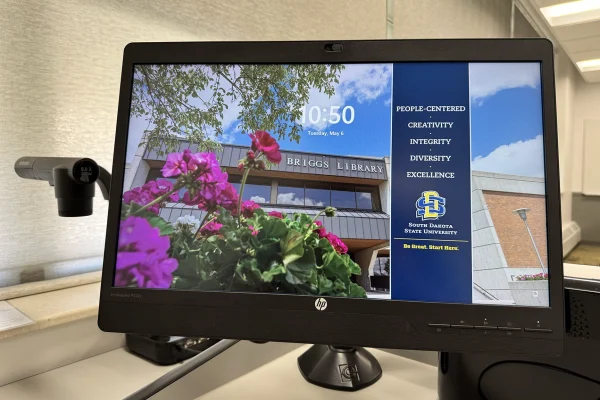Student survey guides officials
January 20, 2003
Toby Uecker
A graduate statistics project is providing university administrators and city and state officials with the information necessary to make decisions based on the attitudes and opinions of SDSU students.
The class, led by plant science professor Zeno W. Wicks III, conducted a survey of more than 800 SDSU students regarding their opinions on various campus, community and state issues. Wicks shared the survey results with the Brookings City Council at its Jan. 7 meeting and has also discussed the survey with various university officials. He also hopes to use some of the information to help Gov. Mike Rounds with economic development issues.
“They’re important for the city to understand, important for the university to understand,” Wicks said of the survey results. “Those are important numbers for all of us.”
The project is something Wicks and his students have done for several years. Wicks said he sits down with administration and government officials each year and asks what they’d like to know about.
This year’s survey took place during the fall semester and was administered to students in classes that required a prerequisite, generally upperclassmen. It asked students about topics ranging from their opinion of the residence hall experience at SDSU to whether they intend to stay in the state after graduation.
On the campus level, Wicks said, this year’s focus was on non-academic activities at SDSU. Administrators wanted to get a handle on students’ feelings about more than just the classes and instructors the university offers.
According to survey results, students consider the non-academic atmosphere to be fairly healthy. More than 80 percent of respondents rated their residence hall experience as “good” or “great,” and over 86 percent said that the SDSU social climate meets or exceeds their expectations.
Most interesting to Wicks is the student response to how often students go home.
“We have a reputation as a suitcase college, but if you look at the numbers … you’ll find that on any given weekend, somewhere in the neighborhood of 65 percent of the students are here,” he said.
That fact might suggest to administrators a greater focus on weekend programming would be well-met.
The survey also asked students how they feel about the spending of student fees at SDSU, a question of particular interest to the Students’ Association Senate, for which Wicks is an advisor.
Just over 57 percent of students responded that the fees they pay the university are either “not at all” or “not really” well-spent. While he emphasizes that 43 percent are still satisfied with student fee spending, Wicks also recognizes what this disapproval might mean for SA allocations.
“There’s a lot of money students pay for fees, and it’s our job to use those fees wisely. Half the people are saying, ‘I don’t think the fees are spent wisely.’ That’s something to pay attention to,” he said.
There are also statistics in the survey for city officials to pay attention to, Wicks said.
Wicks is a member of the Brookings City Council and reported the survey results to his peers last week. Key to his presentation was the idea that students do not have a negative impact on nor a negative impression of the Brookings community.
When asked what they think of Brookings, over 89 percent of students gave the city a rating of at least “okay,” with over 20 percent rating it as “great.” About the same number declared that they felt Brookings was “sort of” or “definitely” student friendly.
Wicks said, “These are great numbers, I think, for our community. It should also be a wake-up call for people who think students are negative on their community.”
He added that the survey showed the positive economic impact of students on the community, showing not only that the students themselves spend money here, but that 85 percent of students bring a family member or relative to Brookings at least once per semester.
On the other hand, survey results also showed that about 85 percent of SDSU students feel the Brookings Police Department targets students in at least some way.
“If it’s not true, they’ve got one [big] perception problem,” Wicks said.
The survey also asked questions of interest to statewide initiatives. The SDSU survey shows that students want to stay here, but don’t always feel they have the opportunities they want if they do.
Specifically, while over 77 percent of students surveyed said they would stay in the state if they could find the job they want, only 41 percent said they planned to be able to stay in the state.
“It’s pretty important for our governor to understand that this state is getting old because we’re not offering opportunity. It’s not getting old because people want to get out of here,” Wicks said.
Most times, Wicks said, the officials that get this information do understand it and make use of it as they make decisions. The statistics are especially convincing because they represent directly 15 percent of SDSU upperclassmen, which Wicks describes as a good, solid sampling.
“People pay a lot of attention when you get numbers like this,” Wicks said. “With those kinds of numbers, we can be pretty confident that what they have to say is what’s going on.”





















